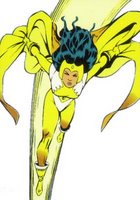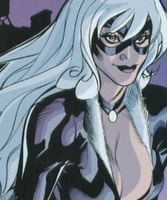Profile: Dr. Light 2
 Kimiyo Hoshi, Dr. Light 2
Kimiyo Hoshi, Dr. Light 2First appearance: during Crisis on Infinite Earths in 1985
Current status: as far as I know, she’s in okay shape, and was recuperating in the hospital. More on this below.
Was subjected to the following act of discrimination: in Green Arrow #54-55 in 2005, during all the hogwash going in between Identity Crisis and Infinite Crisis, the male Dr. Light (whose first name is Arthur), in a continuation of the out-of-character depiction first ascribed to him by Brad Meltzer in Identity Crisis, scuffled with her and upon knocking her unconscious, siphoned some of her own power for his own use. She didn’t die, but she did end up in the hospital.
What’s wrong with how this was done? One big mistake is that Hoshi was being brought back only so that she could serve as a kind of plot device – though she didn’t die from Arthur Light’s attack on her, she was still just there so she could be injured. But that’s not all. In Green Arrow #57, Arthur Light gloated about the “joys” of rape, as if they couldn’t have made him any more loathsome and out-of-character than they already did.
In fact, that’s what really makes the whole story in Green Arrow during the Infinite Crisis standoff a megabomb disaster. Because it was yet more tiresome shock tactics, that also do little more than to destroy a rogues gallery villain whose past history shows that he never committed acts like rape before, nor did he gloat about it. And Kimiyo Hoshi deserves much better than even a story where she’s wounded and spends time in the hospital.





